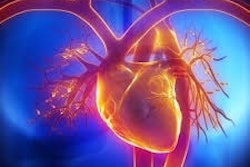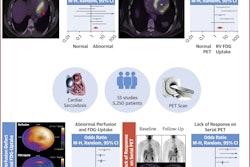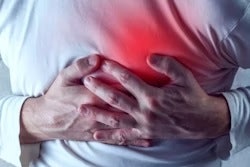Exercise activity is an independent predictor of "hard events" such as heart attacks in patients undergoing stress PET myocardial perfusion imaging (MPI), according to a group at Cedars-Sinai Medical Center in Los Angeles.
The result is from a study of 1,686 patients who underwent PET MPI and self-reported exercise activity on a simple single-item questionnaire prior to imaging.
“Our findings indicate that a pragmatic single-item exercise question can improve the clinical utility of stress PET MPI, while also serving to identify which patients may deserve exercise counseling due to the absence of exercise activity,” noted lead author Keiichiro Kuronuma, MD, and colleagues. The research was published October 25 in the Journal of Nuclear Cardiology.
Pharmacological PET MPI stress tests evaluate the blood flow (perfusion) through the coronary arteries to the heart muscle using radiotracers such as rubidium-82. The technique is widely used to assess patients with suspected or known coronary artery disease (CAD).
Recent studies have demonstrated that information from single-item physical activity questionnaires can provide complementary prognostic information among patients undergoing coronary artery calcium scans and coronary CT angiography, yet there have been no reports testing the hypothesis in patients undergoing stress MPI, the authors noted.
To that end, the group enrolled consecutive outpatients slated for MPI at their institution between July 2013 and December 2018. The mean age of participants was 70.8 years and 64% were male. The researchers divided the cohort into four groups according to the exercise activity: no/minimal exercise (scores of 0 to 1), low exercise (scores of 2 to 4), moderate exercise (scores of 5 to 8), and high exercise group (scores 9 to 10).
Out of 1,686 patients, 221 (13%) had what the researchers called "hard events" -- which they defined as all-cause death and myocardial infarction -- during a mean follow-up of 3.8 years. Based on the questionnaire, there were 551 patients in the no/minimal exercise group, 468 in the low exercise group, 485 in the moderate exercise group, and 182 in the high exercise group.
Among the 221 patients who experienced hard events, the event rate decreased with increasing exercise activity: 16.5% of events occurred in the no/minimal group, 12.2% in the low group, 11.3% in the moderate group, and 9.9% in the high exercise group.
In addition, patients reporting no/minimal exercise activity had significantly worse survival compared with patients who reported moderate or high exercise activity (p = 0.003), according to the findings.
Moreover, according to a Cox analysis adjusted for clinical and PET-MPI variables including myocardial flow reserve and heart rate response -- PET metrics calculated to diagnose CAD -- exercise activity was independently associated with negative outcomes, the group noted.
“To our knowledge, our study is the first to examine the prognostic utility of an ultrashort exercise questionnaire among patients undergoing stress-rest MPI,” the group noted.
Ultimately, the concept of using lifestyle “vital signs” to assess such factors as patients’ degree of physical activity is an emerging concept in clinical practice, according to the authors. The concept is that checking such lifestyle vital signs should be short in order to be applied in busy clinical settings and administered in a way that does not disrupt the clinical flow of laboratories, they wrote.
“The increasing evidence that ultrashort exercise questionnaires provide independent prognostic information among cardiac patient cohorts, including in our present study, provide a mandate to make the incorporation of patient-reported physical activity part of the basic assessment of patients referred for stress MPI,” the group concluded.
The full study is available here.




















